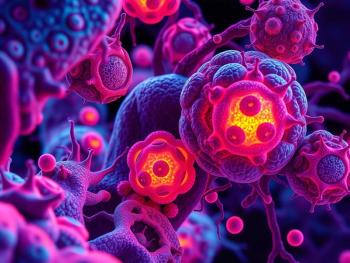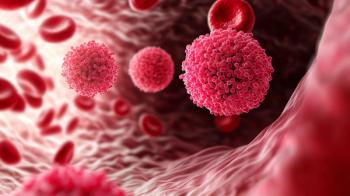
Pharmacy Practice in Focus: Oncology
- August 2020
- Volume 2
- Issue 4
An Overview of CAR T-Cell Therapies and Adverse Effects
Patients may have many questions before receiving CAR T-cell therapy, so accurate counseling is vital to their support.
Counseling patients on the benefits and adverse effects (AEs) of chimeric antigen receptor (CAR) T-cell therapy can be challenging because it is a complex and relatively new form of immunotherapy. New guidelines from the National Comprehensive Cancer Network (NCCN), however, aim to help clinicians provide accurate information and guidance to patients.
CAR T-cell therapy works by reengineering components of the immune system to attack cancer cells. In this process, immune cells from the patient are sent to a lab and armed with a CAR, which then guides the cells to find and kill cancer cells using a “search and destroy” approach once they are reintroduced into the patient, following a short course of chemotherapy.1
Two CAR T-cell therapies have received FDA approval thus far: axicabtagene ciloleucel (Yescarta; Gilead) and tisagenlecleucel (Kymriah; Novartis). Both treatments bind to the CD19 protein, which is found on some leukemia cells and most B-cell lymphoma cells. According to the NCCN guidelines, the 2 therapies are generally used to treat only cancer that does not respond to the other treatments or that has returned after treatment. Both drugs are given intravenously, typically via a central venous catheter below the collarbone or in the upper arm. Most patients stay in the hospital for at least a week following therapy, according to the guidelines, allowing for close monitoring and treatment of urgent AEs. If inpatient care is not possible, a center with CAR T-cell outpatient experience may provide close monitoring, the guidelines note. AEs such as tumor lysis syndrome and seizures may occur during treatment.
Tumor lysis syndrome occurs when the dead cancer cells enter the bloodstream and disrupt the chemical balance of the blood, potentially leading to organ damage. It presents most often after treatment for aggressive cancers, but medications can prevent or treat it. Seizures may also be an issue during an infusion of CAR T-cell therapy, but levetiracetam can prevent them. The treatment is typically taken as a pill every 12 hours for up to 30 days, but the care team may use other treatments at their discretion, according to the guidelines.
Ongoing blood and laboratory testing is necessary during CAR T-cell treatment, including complete blood count, comprehensive metabolic panel, coagulation profile, C-reactive protein, and ferritin tests.
Long-Term AEs
Practitioners should counsel patients on potential long-term AEs, which can include low blood cell counts and low numbers of B cells. Patients may have lower-than-normal numbers of red blood cells, white blood cells, and platelets for weeks to months after CAR T-cell therapy, which can increase the risk of infection. Clinicians may use blood and platelet transfusions and growth factors individually or together to minimize this risk. Erythropoiesis-stimulating agents can stimulate the body to produce more red blood cells, while colony-stimulating growth factors such as filgrastim can help the body produce more white blood cells.
CAR T-cell therapy is most frequently used to treat B-cell non-Hodgkin lymphomas, and in the course of that treatment, normal as well as diseased B cells are destroyed. B-cell aplasia, defined as having low numbers of B cells, is a normal, long-term AE of CAR T-cell therapy, an indication that the CAR T cells are continuing to fight the cancer. Although this is positive for patients, it also means they have fewer antibodies to protect from infection, potentially creating a condition called hypogammaglobulinemia. Immunoglobulin replacement therapy may be needed to increase antibody levels.
Serious AEs
CAR T-cell therapy is an aggressive cancer treatment that can have severe and potentially life-threatening AEs, including cytokine release syndrome (CRS) and immune effector cell-associated neurotoxicity syndrome (ICANS).
Following a CAR T-cell infusion, immune cells affected by the treatment may release proinflammatory cytokines into the blood, which stimulate the inflammatory response of CRS. This AE is often mild, but can be severe. Symptoms include fever, chills, low blood pressure, rapid heartbeat, trouble breathing, and low oxygen. Most patients experience CRS, but it does not need to be experienced to know that CAR T cells are working. The cancer type and the specific CAR T-cell medication both influence the likelihood that a patient will experience CRS, which generally starts 2 to 3 days after the infusion and lasts 7 to 8 days. Treatments for CRS include tocilizumab (Actemra; Genentech) and corticosteroids.
Neurologic toxicities can range from common, mild symptoms such as headache, dizziness, and trouble sleeping to more severe ones such as seizures, brain swelling, and coma. Most of these symptoms are together known as ICANS, which can be evaluated on a grading system to determine how severe the symptoms are.
Neurologic AEs typically begin 4 to 10 days after treatment and last about 2 weeks, although the guidelines note they can last as long as 4 to 8 weeks. Mild symptoms may require only supportive care, whereas intravenous corticosteroids can treat moderate and severe ICANS.
The guidelines also note that patients experiencing both CRS and ICANS should receive tocilizumab as an additional treatment. Other assessments and supportive care may include neurologic evaluations, intravenous fluids, brain imaging or electroencephalogram, and a lumbar puncture to confirm a diagnosis of severe ICANS.
REFERENCE
Immunotherapy side effects: CAR T-cell therapy. National Comprehensive Cancer Center. 2020. Accessed July 16, 2020. https://www.nccn.org/patients/guidelines/ content/PDF/immunotherapy-se-car-tcell-patient.pdf
Articles in this issue
over 5 years ago
Managing Oral Oncolytics During the COVID-19 Pandemicover 5 years ago
Brown Bag Consult®: Chemotherapy Recovery With Heart Problemsover 5 years ago
Apixaban: A New Treatment Option for Cancer-Associated VTEover 5 years ago
What Does Excellence in Oncology Pharmacy Look Like?over 5 years ago
Stability of Rare TP53 Comutations in Patients With AMLover 5 years ago
Nano Drug Prospect Attacks Aggressive TNBC CellsNewsletter
Stay informed on drug updates, treatment guidelines, and pharmacy practice trends—subscribe to Pharmacy Times for weekly clinical insights.



















































































































































































































